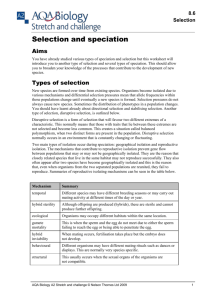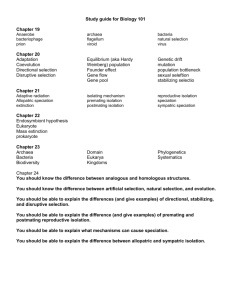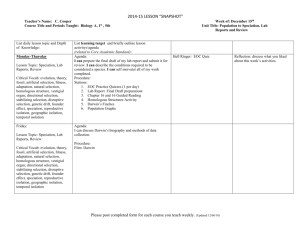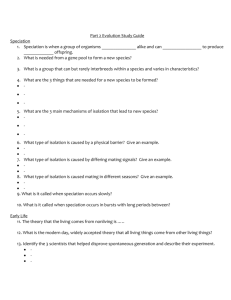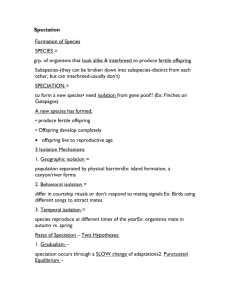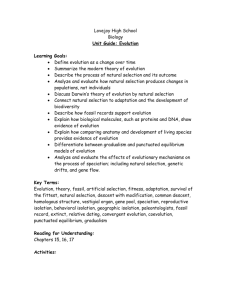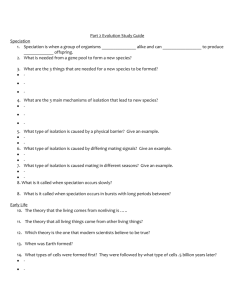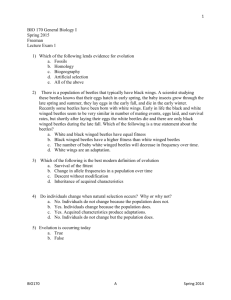Selection & Speciation: A2 Biology Teacher Notes
advertisement
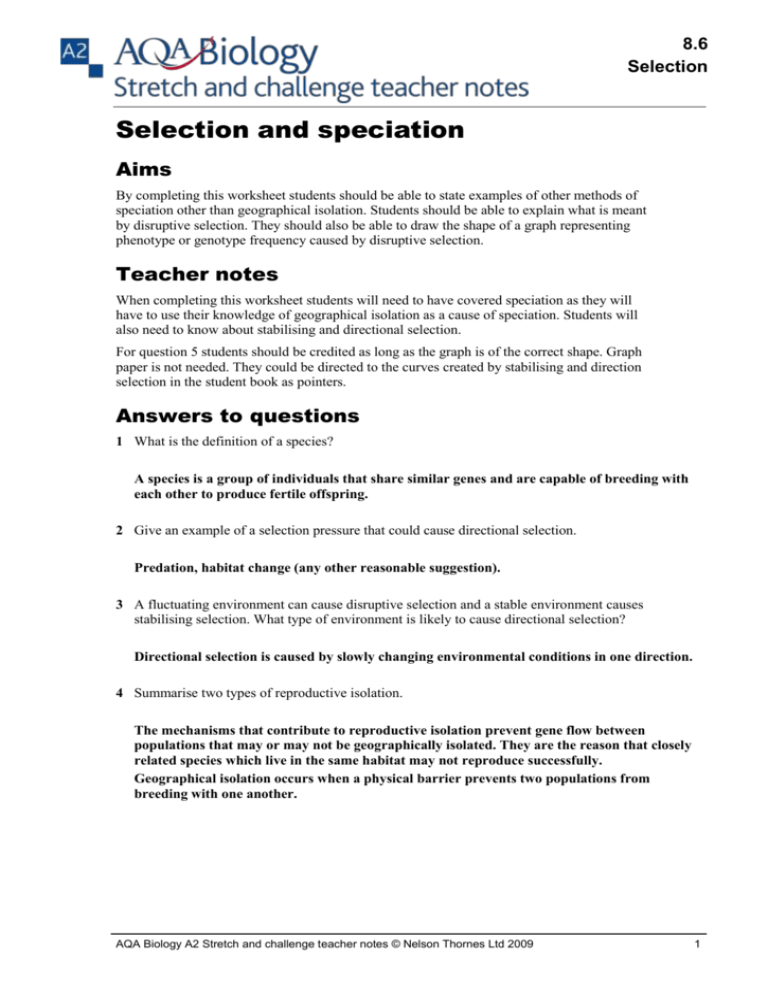
8.6 Selection Selection and speciation Aims By completing this worksheet students should be able to state examples of other methods of speciation other than geographical isolation. Students should be able to explain what is meant by disruptive selection. They should also be able to draw the shape of a graph representing phenotype or genotype frequency caused by disruptive selection. Teacher notes When completing this worksheet students will need to have covered speciation as they will have to use their knowledge of geographical isolation as a cause of speciation. Students will also need to know about stabilising and directional selection. For question 5 students should be credited as long as the graph is of the correct shape. Graph paper is not needed. They could be directed to the curves created by stabilising and direction selection in the student book as pointers. Answers to questions 1 What is the definition of a species? A species is a group of individuals that share similar genes and are capable of breeding with each other to produce fertile offspring. 2 Give an example of a selection pressure that could cause directional selection. Predation, habitat change (any other reasonable suggestion). 3 A fluctuating environment can cause disruptive selection and a stable environment causes stabilising selection. What type of environment is likely to cause directional selection? Directional selection is caused by slowly changing environmental conditions in one direction. 4 Summarise two types of reproductive isolation. The mechanisms that contribute to reproductive isolation prevent gene flow between populations that may or may not be geographically isolated. They are the reason that closely related species which live in the same habitat may not reproduce successfully. Geographical isolation occurs when a physical barrier prevents two populations from breeding with one another. AQA Biology A2 Stretch and challenge teacher notes © Nelson Thornes Ltd 2009 1 8.6 Selection 5 Draw the shape of graph that you might expect to see after disruptive selection has occurred. This should be a double-peaked curve with peaks either side of the mean. 6 Two of the reproductive isolation mechanisms in the table occur after mating and fertilisation has occurred (post-zygotic). Which two mechanisms are post-zygotic? Explain your answer. Hybrid sterility and hybrid inviability, as both of these mechanisms occur after fertilisation. 7 Why are post-zygotic isolation mechanisms inefficient for the organisms involved? Post-zygotic mechanisms are inefficient as the organism will spend resources and energy on producing gametes, supporting embryos and raising offspring that are unable to contribute to the species continuation. 8 Why are post-zygotic isolation mechanisms more of a problem for rare organisms? If a species is rarer than the species it is mating with, the more common species is likely to still have successful matings, whereas there will be fewer successful matings for the rare species and its numbers are likely to decrease. AQA Biology A2 Stretch and challenge teacher notes © Nelson Thornes Ltd 2009 2
